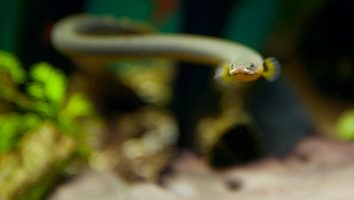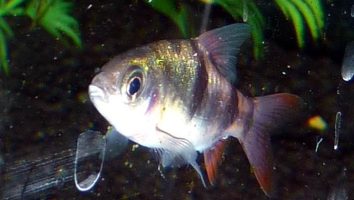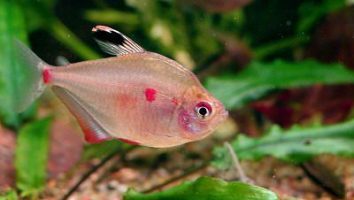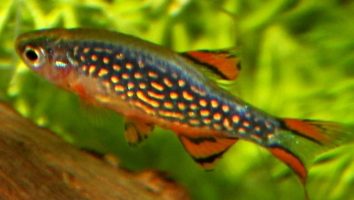The striped raphael catfish is a beautiful and unique freshwater fish that is perfect for the beginner aquarist.
This species is very peaceful and relatively easy to care for, making them a great addition to any community tank.
They are also known to be very good at eating algae, which can be a problem in some aquariums.
If you’re thinking about getting a striped raphael catfish, this guide will teach you everything you need to know about their care.
Table of contents
Species overview
Striped Raphael Catfish (Platydoras costatus) are found throughout much of South America, specifically in the Amazon and Orinoco river basins.
They prefer slow-moving waters with a lot of vegetation and hiding places. This is something to keep in mind when setting up their tank as they will need a lot of places to hide.
In the wild, these fish are opportunistic predators and will eat just about anything they can fit in their mouths. This includes other fish, insects, and small crustaceans.
One of the most interesting things about the Striped Raphael Catfish is that it has the ability to change its color to match its surroundings. This is a great adaptation that helps it to avoid predators and to ambush its prey.
Appearance
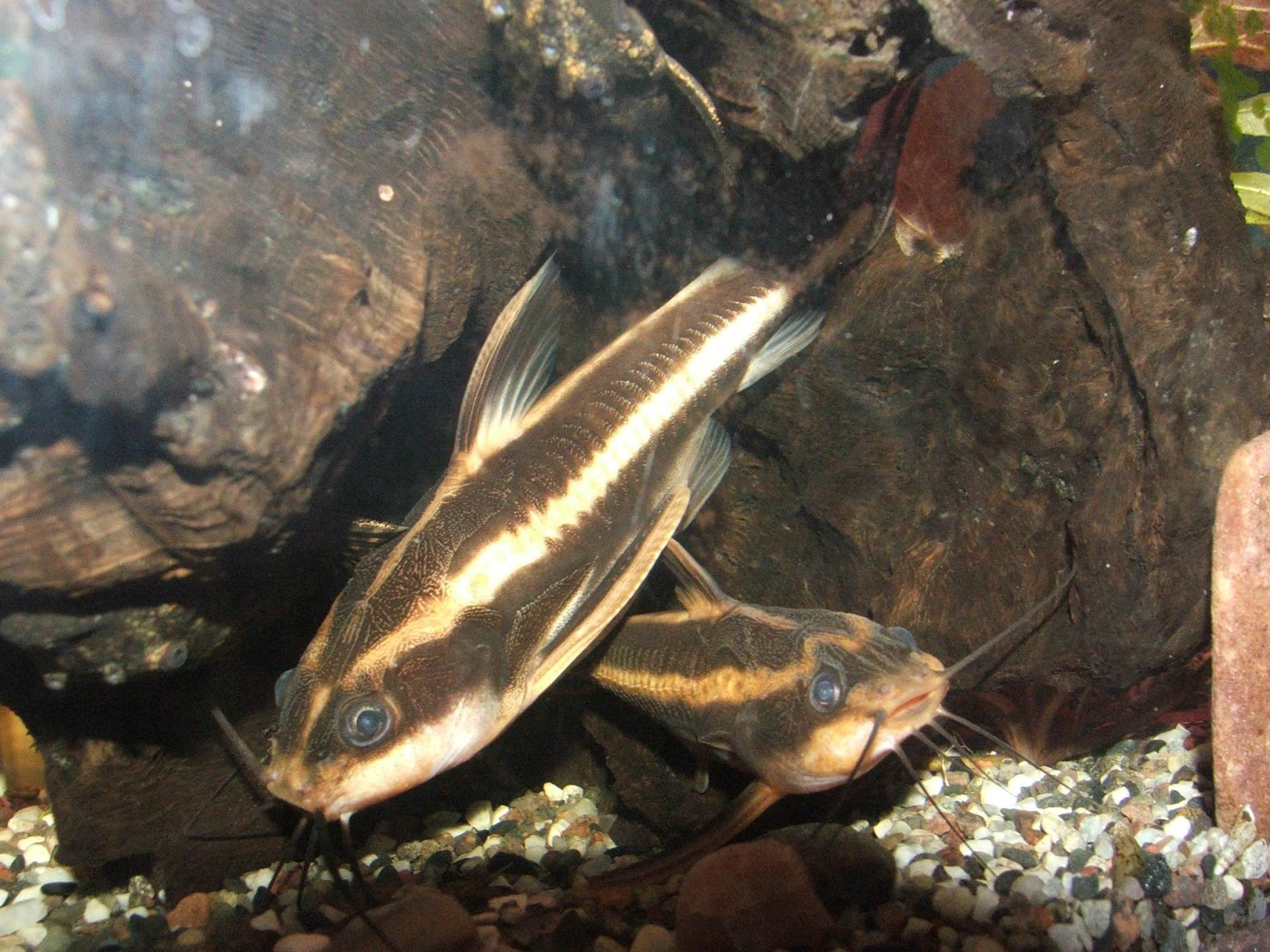
The Striped Raphael Catfish is a beautiful fish that is easily recognizable by its striking coloration. The body of this fish is jet black with 3-5 bright white stripes running vertically down its length.
The fins of the Striped Raphael Catfish are all black except for the very tips which are white. The dorsal fin is tall and triangular in shape while the anal and pectoral fins are shorter and more rounded. The caudal fin is forked and slightly taller than the dorsal fin.
The Striped Raphael Catfish has a long, slender body that is covered in small black spots. These spots are most dense along the fish’s lateral line.
The Striped Raphael Catfish is a peaceful fish that is best kept in a tank with other peaceful fish. It is not suited for a community tank as it may be bullied by other fish.
Lifespan
The lifespan of a striped Raphael catfish is about 5 to 7 years. However, there have been reports of these fish living up to 10 years in captivity.
As with most fish, the key to a long life is good care. These fish are particularly sensitive to water quality, so make sure you’re keeping an eye on your tank’s parameters.
A good diet is also important. Striped Raphael catfish are omnivores, so they need a varied diet that includes both meaty and plant-based foods.
Size
The average size of a full-grown Striped Raphael Catfish is around 4 inches, with some specimens reaching up to 6 inches. These fish are relatively slim, so they don’t need a ton of space to move around.
Tank
Tank Size
The recommended minimum tank size for a striped raphael catfish is 30 gallons.
You might be able to get away with a 20 gallon tank if you’re keeping a single fish or a very small school but we don’t recommend it.
These fish are relatively active and will appreciate the extra space to swim around. They also like to be in groups so we recommend keeping at least 3 fish together.
Water Parameters
The striped raphael catfish is a tropical freshwater fish that is native to the Amazon region of South America. In the wild, they inhabit slow-moving waters with a sandy substrate and plenty of hiding places.
To replicate their natural habitat in your aquarium, you’ll need to maintain some specific water parameters.
The temperature should be between 72 and 82 degrees Fahrenheit. The pH should be between 6.5 and 7.5, and the water hardness should be between 4 and 8 dGH.
As for alkalinity, the ideal range is between 4 and 8 dKH.
What To Put In Their Tank
As with most fish, the inside of their tank is very important. This is especially true for bottom-dwelling fish like Striped Raphael Catfish.
The substrate you choose is going to be very important. We recommend a soft substrate like sand since these fish spend a lot of time on the bottom of the tank. A hard substrate can damage their delicate fins and make it difficult for them to move around.
As for other tank mates, we recommend sticking with other bottom-dwellers. These fish are peaceful by nature and don’t bother other fish that much. That being said, they can be a little shy so it’s best to stick with fish that are around the same size.
Corydoras catfish are a great choice since they have a similar temperament and prefer to stay near the bottom of the tank.
When it comes to plants, there are a few options. These fish don’t really bother plants too much, but they can uproot them when they’re digging around. If you want to include plants we recommend something like Java Moss or Hornwort since they can handle a little abuse.
Common Diseases
Striped Raphael Catfish are a hardy and disease-resistant fish, but they are not immune to illness. The most common disease that affects this species is ich, which is a parasite that can cause white spots to form on the body and gills of the fish.
Other potential diseases include infections, bacteria, and viruses.
The best way to prevent your Striped Raphael Catfish from getting sick is to maintain a clean and stable environment in their tank. Regular water changes and vacuuming of the substrate will help to keep the water quality high and reduce the risk of disease.
If you do notice that your fish are sick, it’s important to act quickly and consult a veterinarian. The sooner you start treatment, the higher the chance is that your fish will make a full recovery.
Behavior & Temperament
The striped raphael catfish is a nocturnal creature that prefers to stay hidden during the day. It’s a shy fish that isn’t known for being overly friendly with tank mates. In fact, it’s not uncommon for these fish to nip at the fins of other fish.
That said, the striped raphael catfish is a peaceful fish that will eventually get used to its surroundings and become less shy. Once it’s acclimated, it may even come out to play during the daytime.
Like most catfish, the striped raphael catfish is a scavenger. It will eat just about anything, so it’s important to have a good filtration system in place. A well-fed fish is less likely to nibble on the fins of its tank mates.
These fish are also known to be jumpers, so it’s important to have a tight-fitting lid on your tank.
Tank Mates
When it comes to choosing tank mates for striped raphael catfish, there are a few things you need to consider.
First, these fish are on the large side. They can grow up to a foot long, so you need to make sure you have enough space. A 55-gallon tank is the minimum, but bigger is always better.
Secondly, striped raphael catfish are nocturnal. This means they’re most active at night. As a result, you need to choose tank mates that are okay with this.
Third, these fish are peaceful. They won’t bother other fish and should be paired with similar species.
With that in mind, here are some good tank mates for striped raphael catfish:
- Loricariids
- Synodontis
- Plecos
- Corydoras
- Otocinclus
- Neon Tetras
- Rummy Nose Tetras
- Black Widow Tetras
- Buenos Aires Tetras
Breeding
The striped raphael catfish is a bit of a difficult fish to breed. They’re not the most common fish in the hobby and their specific breeding requirements make them challenging to work with.
First, you need to identify a male and female. The easiest way to do that is by looking at their anal fins. The male’s anal fin will be much longer and have a more pronounced hook.
Once you’ve identified the sexes, it’s time to set up a breeding tank. The tank should be at least 30 gallons and have a sandy bottom. The water should be soft with a neutral pH.
Floating plants are a must. The plants will give the fry a place to hide and feel safe.
When everything is set up, add the two fish to the tank. It’s best to introduce the female first. Then, let them acclimate to their new environment.
The next step is to trigger spawning. The easiest way to do that is by doing a large water change. The change should be at least 50 percent.
Once the water change is complete, the spawning should happen within a few days. The female will lay her eggs on the plants and the male will fertilize them.
After the eggs have been fertilized, the parents will eat them. So, it’s important to remove the adults as soon as possible.
The eggs will hatch in about a week. The fry will be tiny, so you’ll need to feed them live foods. Baby brine shrimp is a good option.
Conclusion
The striped raphael catfish is a great fish for anyone who wants a unique-looking addition to their tank. They’re also relatively easy to care for, which is always a bonus.
As with any fish, there are some things you’ll need to be aware of in order to keep your fish healthy and happy. But we think the pros definitely outweigh the cons when it comes to the striped raphael catfish.
If you’re looking for a new fish to add to your tank, we highly recommend giving the striped raphael catfish a try!

